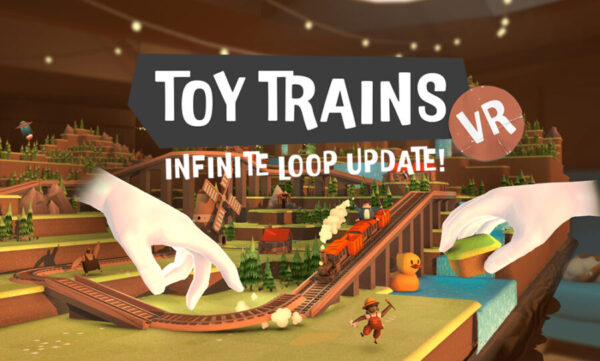
TL;DR for Toy Trains
(played on a Meta Quest 3 128 GB model)
| Pros | Cons |
| + Significantly more content | – No way to share custom content |
| + Increased challenge | – Some QoL Settings absent |
| + New modes | |
| + Streamlined controls |
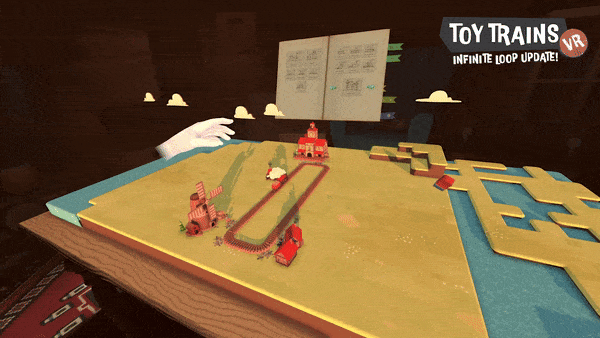
Toy Trains developers Something Random recently released their “Infinite Loop” update and we’ve got some thoughts about it!
If you’re unfamiliar with the game, then first check out our previous review of Toy Trains where we praised it for its charming aesthetic and unpretentious artistry; for its finely coordinated use of score, theme, setting, and perspective to amplify its fun (if perhaps somewhat unchallenging) gameplay.
But our biggest issue with Toy Trains’ first impression? Coming in at around three hours of play, there just wasn’t enough game. Well, the Infinite Loop update addresses exactly that! There is now much more game, indeed.
Where there were previously only ten levels (with about eight of them feeling like an extended tutorial) there are now an additional twelve—much more challenging—levels to tackle!
This massive (and free!) update also comes with new tools that streamline the creative process: Instead of grabbing one at a time from your catalogue of railroad pieces, you can now essentially paint with them; dragging them across the terrain to seamlessly place down many at once. Thankfully, you can also erase those pieces in much the same press-and-drag way.
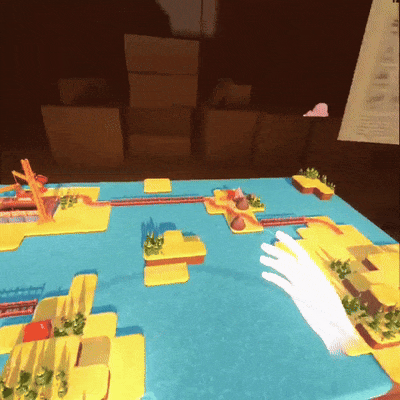
So expressing your creativity fluidly now comes faster; a handy counterweight to this update’s harder puzzles.
Sure, it’s fun—in a manic sort of way—to frantically snatch pieces off the table and toss them over your shoulder when it comes time to make major alterations to your railroad. But it can sometimes get tedious. Having the power to simply erase (or construct) large portions of railway all at once gives you the freedom to more quickly try something out, fail, and try again. This ability to on-the-fly see what works and what doesn’t means less mental effort to visualize your railroad ten steps ahead of actually building it.
And if that’s still not creatively satisfying enough for you, they’ve also added a sandbox mode, allowing you to make your own maps to choo-choo your way through-through.
An unexpected treat, the endless creative modularity of the sandbox mode is—I imagine—the namesake for the “Infinite Loop” update. Honestly, there came a point when I had to admit that I was way beyond billable hours as a reviewer, but kept playing because I still wanted to see what sorts of worlds—full of what sorts of obstacles—I could make for myself to then traverse and overcome.
The infinite Loop update makes Toy Trains everything I had wished it would be during my first playthrough (plus an extra sandbox for good measure!)
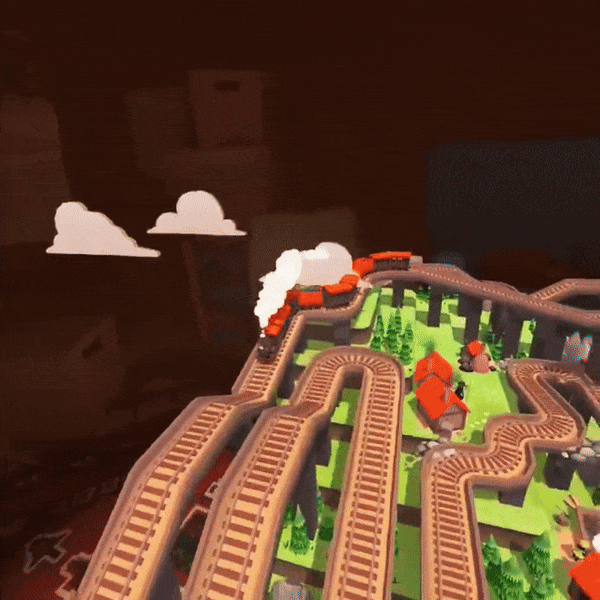
But even with all of this fulfilling of unspoken promises, the game is still not without its drawbacks.
While the use of a catalogue of railroad pieces as the primary menu is more diegetically satisfying—I’m more fully invited to occupy the living perspective of someone actually making model railroads in their basement—it’s just too sparse.
Yes, it’s charming to have a physical book with an in-world reason to exist as my main menu system. But it feels as though that creative choice is somehow related to its lack of functionality.
It’s like the developers had the sense that the more robust the options within the menu, the less it would feel like a toy catalogue. And while there is an aesthetic appeal to that choice, it can be frustrating when you’re stuck hunting for options that are standard to most modern VR experiences, yet conspicuously missing from this one.
Ironically this focus on immersion over functionality actually leaves me feeling less immersed, as I have to spend my time and attention groping around in vain for an option that should exist, but doesn’t.
I mean, the start button (at least on the Meta Quest 3) is literally unbound to any action since the “menu” is always present. As such I would often find myself fruitlessly pressing start to try and adjust the table height (which frequently spawns incorrectly), re-center myself, or turn off snap-move. Unfortunately, there are simply no such options.
Moreover, the “Infinite” nature of the update becomes a lot more finite without any way of sharing custom levels. The addition of some sort of hub to browse player-created content would be a welcome one.
Perhaps with that addition, Something Random could also add a way to differentiate between “playing” and “making” custom levels. For the moment, that lack of differentiation can lead to accidentally modifying or deleting parts of your map, when you were only trying to affect your track. This is especially dangerous with the new drag-to-erase tool.
Other, smaller problems persist: The English translation is still not great (try reading the back cover of the catalogue and you’ll see what I mean). And the physics behind snapping train cars to your caboose gets pretty janky after two or three.
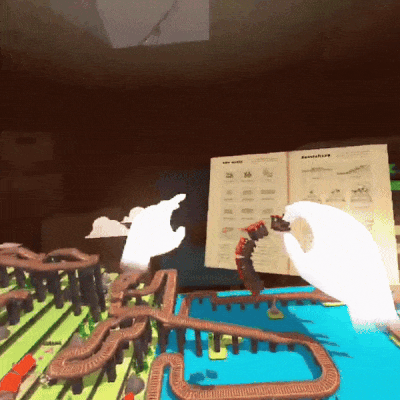
Nonetheless, the Infinite Loop update takes Toy Trains firmly out of the category of a pretty-if-too-short game for kids and into the category of a full-fledged, challenging, puzzle-sandbox VR romp.
And at the unbeatable price of free, Toy Trains: Infinite Loop Update gets an 8/10.
Scoring & Rubric
Scores are out of 10, where 10 is a masterpiece, 1 is unplayable, and 5 is just average.
Gameplay has a heavier weighting in the overall score.
Gameplay – 8
Immersion – 8
Visuals – 9
Sound – 8
Performance – 8
Replayability – 7
Image credit: Something Random / Toy Trains VR / Auganix
About the author
Kierkegaard once said that the artist is like one stuck inside Phalaris' brass bull, which burned up its victims and—due to the formation of its apertures—made beautiful music from their anguish.
The critic, he said, is just like the artist except he doesn't have the anguish in his heart nor the music on his lips.
A lifelong gamer based out of Vancouver, Pelé disagrees with Kierkegaard.
